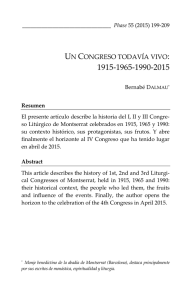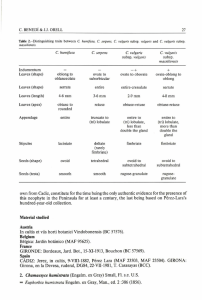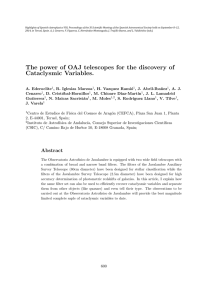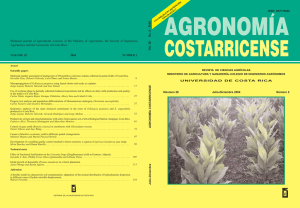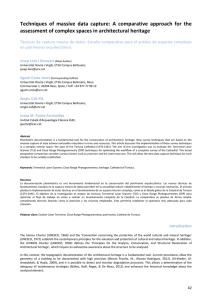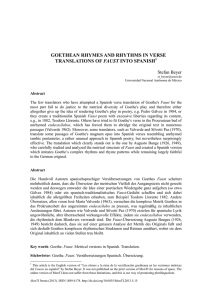The form described as «foliis oblongis v. oblongo
Anuncio
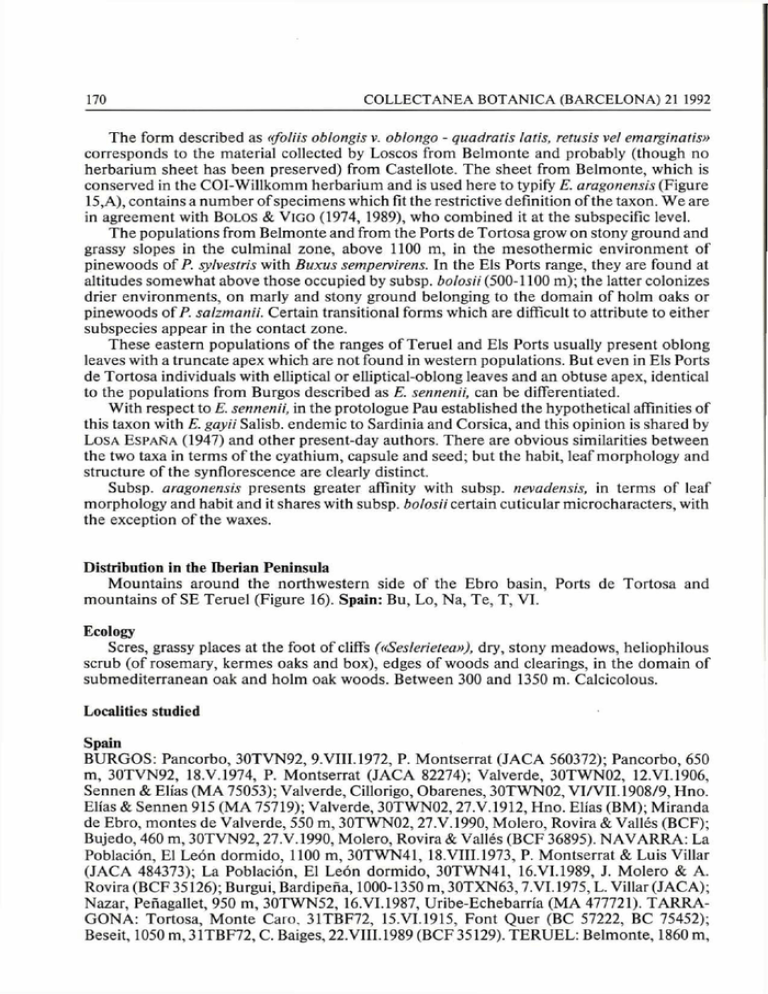
The form described as «foliis oblongis v. oblongo - quadratis latis, retusis vel emarginatis» corresponds to the material collected by Loscos from Belmonte and probably (though no herbarium sheet has been preserved) from Castellote. The sheet from Belmonte, which is conserved in the COI-Willkomm herbarium and is used here to typify E. aragonensis (Figure 15,A), contains a number of specimens which fit the restrictive definition of the taxon. We are in agreement with BOLOS & VIGO (1974, 1989), who combined it at the subspecific level. The populations from Belmonte and from the Ports de Tortosa grow on stony ground and grassy slopes in the culminal zone, above 1100 m, in the mesothermic environment of pinewoods of P. sylvestris with Buxus sempervirens. In the Els Ports range, they are found at altitudes somewhat above those occupied by subsp. bolosii (500-1100 m); the latter colonizes drier environments, on marly and stony ground belonging to the domain of holm oaks or pinewoods of P. salzmanii. Certain transitional forms which are difficult to attribute to either subspecies appear in the contact zone. These eastern populations of the ranges of Teruel and Els Ports usually present oblong leaves with a truncate apex which are not found in western populations. But even in Els Ports de Tortosa individuals with elliptical or elliptical-oblong leaves and an obtuse apex, identical to the populations from Burgos described as E. sennenii, can be differentiated. With respect to E. sennenii, in the protologue Pau established the hypothetical affinities of this taxon with E. gayii Salisb. endemic to Sardinia and Corsica, and this opinion is shared by LOSA ESPANA (1947) and other present-day authors. There are obvious similarities between the two taxa in terms of the cyathium, capsule and seed; but the habit, leaf morphology and structure of the synflorescence are clearly distinct. Subsp. aragonensis presents greater affinity with subsp. nevadensis, in terms of leaf morphology and habit and it shares with subsp. bolosii certain cuticular microcharacters, with the exception of the waxes. Distribution in the Iberian Peninsula Mountains around the northwestern side of the Ebro basin, Ports de Tortosa and mountains of SE Teruel (Figure 16). Spain: Bu, Lo, Na, Te, T, VI. Ecology Seres, grassy places at the foot of cliffs («Seslerietea»), dry, stony meadows, heliophilous scrub (of rosemary, kermes oaks and box), edges of woods and clearings, in the domain of submediterranean oak and holm oak woods. Between 300 and 1350 m. Calcicolous. Localities studied Spain BURGOS: Pancorbo, 30TVN92, 9.VIII.1972, P. Montserrat (JACA 560372); Pancorbo, 650 m, 30TVN92, 18.V.1974, P. Montserrat (JACA 82274); Valverde, 30TWN02, 12.VI.1906, Sennen & Elias (MA 75053); Valverde, Cillorigo, Obarenes, 30TWN02, VI/VII. 1908/9, Hno. Elias & Sennen 915 (MA 75719); Valverde, 30TWN02,27.V.1912, Hno. Elias (BM); Miranda de Ebro, montes de Valverde, 550 m, 30TWN02,27V. 1990, Molero, Rovira & Valles (BCF); Bujedo, 460 m, 30TVN92,27.V.1990, Molero, Rovira & Valles (BCF 36895). NAVARRA: La Población, El León dormido, 1100 m, 30TWN41, 18.VIII.1973, P. Montserrat & Luis Villar (JACA 484373); La Población, El León dormido, 30TWN41, 16.VI.1989, J. Molero & A. Rovira (BCF 35126); Burgui, Bardipeña, 1000-1350 m, 30TXN63,7.VI.1975, L. Villar (JACA); Nazar, Peñagallet, 950 m, 30TWN52, 16.VI.1987, Uribe-Echebarría (MA 477721). TARRAGONA: Tortosa, Monte Caro. 31TBF72, 15.VI.1915, Font Quer (BC 57222, BC 75452); Beseit, 1050 m, 31TBF72, C. Baiges, 22.VIII.1989 (BCF 35129). TERUEL: Belmonte, 1860 m,



